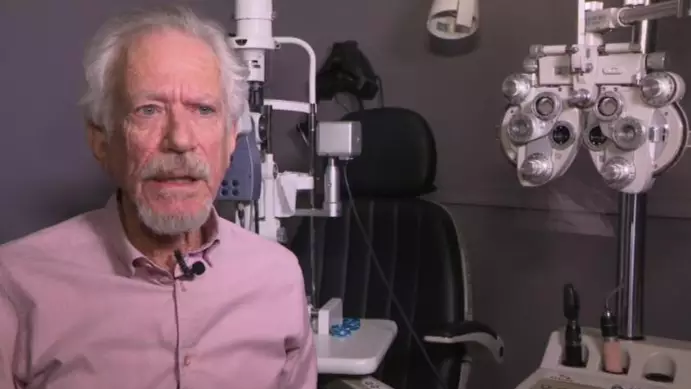
Those who use contact lenses can understand how much of an ordeal they can be to put in, but one Florida man has come up with an ingenious device that makes inserting and removing contacts lenses a cinch.
Craig Hershoff was diagnosed with Fuch's dystrophy in 2000 and almost lost his eyesight. He received three corneal transplants over the course of 10 years, but experienced poor vision, eye strain and difficulty with contact lenses.
Advert
This difficulty inspired him to invent a tool that he hopes will help fellow lens wearers with dexterity issues easily insert and and remove their contact lenses.
Hershoff explained that after his wife's death resulted in anxiety issues that made his hands shake, he decided to build what he called the Cliara Lens Robot - Cliara being an acronym for Contact Lens Insertion and Removal Apparatus.
"What happens in a few years if I actually have a tremor and I can't get these lenses in? I need them to see and I don't have anyone to help put them in for me," Hershoff told CNN.
According to Hershoff, the robot uses suction cups to measure the precise amount of force needed to insert and remove the lenses.
Advert
"It's quite simple. The user looks straight down, and if the insertion is in the right eye, the left eye will be focused on a video display," he said.
"The left eye will see a real-time video of the insertion of the contact lens into the right eye, allowing the user to track the motion of the contact lens at all times."
"When they are ready, the user commands the device to go up to the eye and very sensitive force sensors detect contact and stop the motion of the device as the contact lens is inserted. After insertion, the device retracts downward," he said.
"What is so unique and special about this device is that there is a camera attached so you can see where the lens is going and exactly how it's being placed."
Advert
He added: "Any type of anxiety or nervousness is gone because you are controlling the device and it's extremely gentle and safe."
The device is currently undergoing clinical trials in the US with hopes that it will be approved for commercial use next year, though it It will require approval by the US Food and Drug Administration.
"I think this can really help a lot of people," Hershoff said. "Anyone with a tremor or a neurological disorder -- or anyone who is afraid of touching their eyes."
Featured Image Credit: CNNTopics: News, Technology